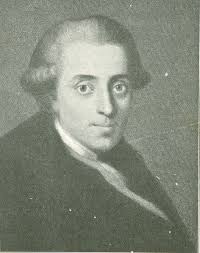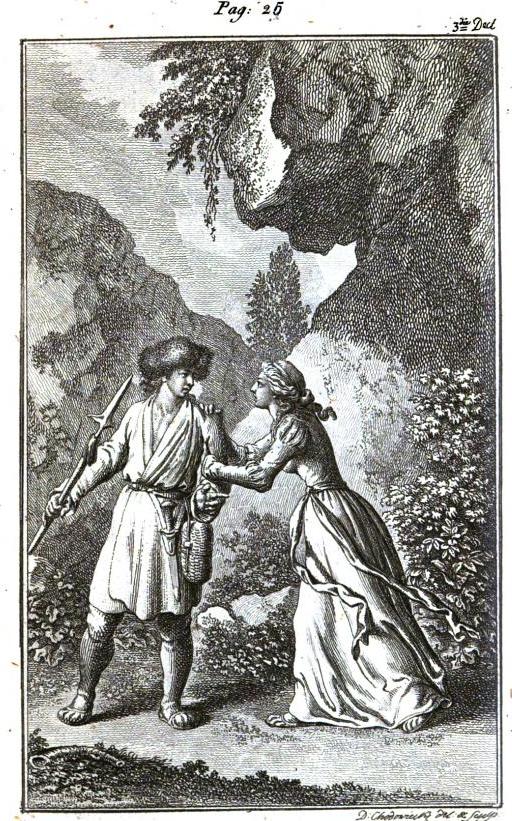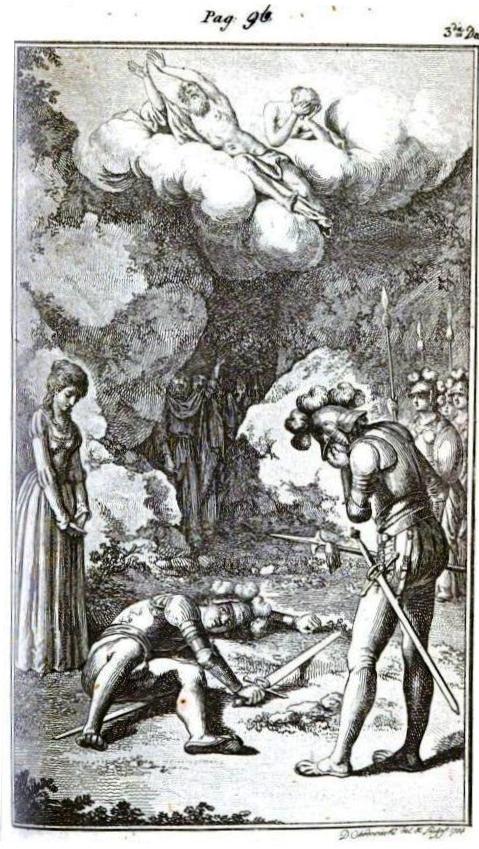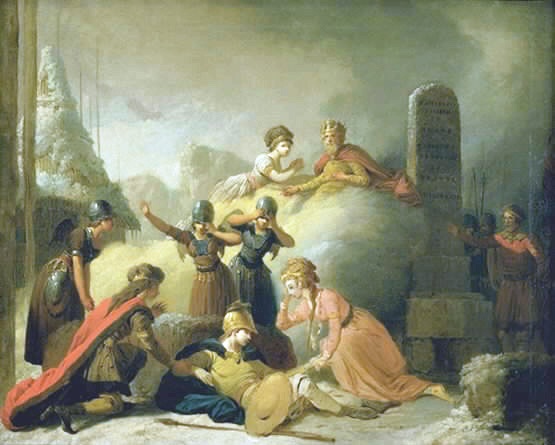Johannes Ewald

Balders Død
Et heroisk Syngespil i tre Handlinger
Based on the story of Balder and Hotherus
in Saxo Grammaticus' Danish History, Book III.
Johannes Ewald was the son of Enevoldsen Ewald, the priest and theologian at the Copenhagen Orphanage. Upon his father's death, Ewald was sent to grammar school in Schleswig, where from 1754-1758, he lived with the school's headmaster Johan Friedrich Licht and so had access to his extensive library. After coming of age, Ewald returned to Copenhagen to study theology where he moved in with his mother's host and later spouse, wealthy merchant Peder Huulegaard. There he fell vehemently in love with his niece Arendse. Ewald quit Divinity School and ran off to earn fast money as a soldier in the Prussian Seven Years War so he could marry her. His war career failed almost from the start and Ewald returned to Copenhagen in 1760 without money or glory. In 1762, Ewald resumed his study of theology and took up free residence in Valkendorfs College, where he wrote theses and literary texts. At the same time, Ewald traveled in German literary circles in Copenhagen devoted to the poet Friedrich Klopstock (1724-1803). He lived by writing occasional verse and also worked on various novels and stories, but did not always manage to finish them. Ewald's health was for many years weakened by severe arthritis and his hard Bohemian life. Later, after he had returned home, he was an unhappy man, tormented by illness. Still, during this time, his poetry developed to a remarkable beauty. Ewald's literary output ranges from heroic-classical dramas to sensitive ballads, traditional occasional poetry and odes in neo-classical style. Ewald, an admiring follower of Klopstock, but who himself had a loud and original gifted poetic nature, was the first Danish poet who took his material directly from Nordic history, legends and mythology. In 1770, Ewald wrote the first original Danish tragedy Rolf Krake. But the images he creates, while very beautiful and romantic, capture little of the Nordic essence. Later, primarily for the extraordinary prize money offered, he entered and won a poetry competition with his heroic 'Singspiel' or musical-drama Balders Død. The winning entry was published as Balders Død. Et heroisk Syngespil i tre Handlinger. En Priisdigt. ["Balder's Death. A Heroic Musical Drama in three acts. A Prize-poem."] In 1773, Balder's Death was brought to the stage of the Danish royal theatre with musicial score by noted composer Johann Ernst Hartmann (1726—1793). The lavish costume and stage drawings of Johannes Wiedewelt amply illustrate what a gay spectacle it was. Richly clad actors tread the boards in colorful military attire, accompanied by finely draped and coiffed ladies in costume. In the royal theatre production of Balders Død, there occur entire ensembles of voluptious Valkyries for the first time, one hundred years before Wagner. Ewald's Balders Død is a story about jealousy, flirtation and sex. Set in a half Old Norse, half-mythological universe, the demi-god Balder falls in love with mortal mistress Nanna, who burns with a passionate desire for him, but who loves prince Hother instead. The backbiting liar Loke plays the two men against each other. His plot doesn't appear to succeed at first, but soon erupts in military conflict with Hother at the head of a berserkergang, leading to Balder's death at the end of Hother's spear. Nanna cries over his corpse. Here the drama ends. The opera was a popular success. It became a sensation and remained in the repertoire 13 years from 1779 to 1792. It then enjoyed eight revivals between the years 1804- 1832. At its heart, Balder's Death is a bourgeois comedy, which plays out the thematic struggle between individual desire and the good of the state, challenging external limits on individual liberties. Balder knows the whole time that Nanna does not love him, but proceeds anyway. Throughout the drama, Balder's emotional pendulum takes tremendous and sudden swings; he agonizes over Nanna, vaccilating between self-hatred and flickering hope, opposite Hother's aggressive fury and idle understanding. From 1773 to 1775, Ewald lived at Rungsted Inn, where he wrote Balder's Death and began his opus magnus Life and Memories. His best known poem is the contemporary Rungsteds lyksaligheder, ["Rungsted's bliss"]. Returning to Copenhagen, he experienced his last great success with his final Singspiel Fiskerne, ["Fishermen"]. At his death in 1781, he was given a national funeral at Trinity Cemetery. Through his art, Ewald won the money and glory he had sought in vain as a youth. |
[POPULAR RETELLINGS]
Illustrations for the Libretto of
Johannes Ewald's Opera
by Daniel Chodowiecki 1782
 Hodur and Nanna |
 Hodur and the Three Wood-Women who give him a sword capable of killing Balder |
 Balder's Death The same scene is illustrated in the painting below. |
 Peter Cramer's Closing Scene of Ewald's Balder's Death Nanna mourns over Balder's body as Odin and Frigg look down from the clouds above. |
[POPULAR RETELLINGS]